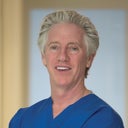It is not normal to have sunken, hollow eyes after eyelid surgery. But, it is unfortunately somewhat common. I'm sorry that this is something you have experienced This can be corrected with fat grafting.Fat grafting is the only way to correct the hollowness and dark circles that result from excessive removal of lower lid fat during a lower blepharoplasty procedure. From the posted photographs it appears that you most likely had a transconjunctival lower blepharoplasty performed, which is removal of lower lid fat through an incision on the inside of the lower lid (no external skin incision). Fat is missing, and to restore a more youthful appearance it has to be replaced.Subcutaneous fat is what provides facial skin with a sense of fullness and vitality, and it helps to impart a youthful color and ‘glow’. Where fat is missing, skin looks darker, less robust and less youthful. Fat also serves as an important part of lower lid support, especially over time as a person ages. Lower lid blepharoplasty should ideally preserve most or all of a patient’s lower lid fat, unless there truly is marked excess that is bulging outward. Fat can not only be treated by removal – it can also be restrained, and it can even be repositioned into areas of hollowness such as the tear trough. In addition, fat can be added to areas of hollowness in and around the lower lids to camouflage or ‘correct’ adjacent areas of fullness. I frequently perform structural fat grafting of the lower lid / cheek junction at the time of lower blepharoplasty, to add lower lid support and to blend the contour of the lid and cheek.Fat grafting of the lower lid area requires experience and meticulous technique. As the area is covered by a very thin layer of skin and muscle, overcorrection must be absolutely avoided. My approach is to graft fat to the point that the area looks aesthetically ideal, then stop and wait 3 months to assess fat survival. As fat survival is variable, additional fat grafting procedures may be performed based on the results of the first. In most cases of post-surgical lower lid hollowness, two to three fat grafting procedures are required to restore adequate subcutaneous fullness in this area.








